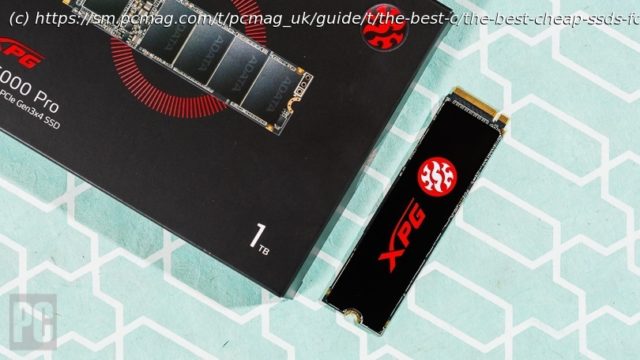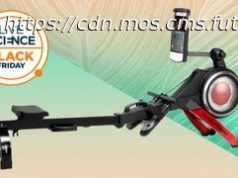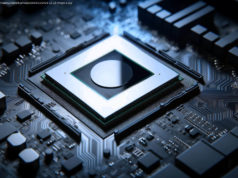Still booting from a hard drive? These budget-minded solid-state drives will give your poky PC a big speed boost. We’ve tested dozens; these are the best.
Today, you’d be forgiven for thinking that » SSD » stood for « seriously speedy drive. » Indeed, we’d lobby for that change. Why? Over the last five years, solid-state drives (SSDs) have changed their shapes, speeds, and storage stripes with such agility that now, they are the biggest real-world difference-makers when it comes to computer upgrades. More than any other kind of core component, you can feel the presence of an SSD. A dozen-plus makers are churning out SSDs for the U.S. market, among them storage heavyweights Samsung, Micron, Seagate, and Western Digital. And over the past decade, SSDs have morphed from exorbitantly priced luxury items into commodities whose quality is almost uniformly high. An example? A 32GB SSD we tested in 2008 sold then for a whopping $800, which is $600 to $700 more than a modern one that packs 60 times the data. Plus, even today’s humblest new SSDs are about five times faster than that ’08 model. But interface and manufacturing advances aren’t the only forces at work these days. Other factors, such as NAND manufacturing efficiencies, have caused prices per gigabyte to fall lower than ever. Oversupply in 2019 was a factor, too. In 2019, we saw situations pitting previously premium-priced drives (for example, the ADATA XPG SX8200 Pro) against built-for-budget drives (such as the WD Blue SN550). Matters have stabilized somewhat in 2021, but no doubt: SSD pricing has shifted into a buyer’s market the last few years. Parts of the price spectrum that were previously reserved for lesser-known budget brands have been penetrated by ADATA, Samsung, and Western Digital drives. Indeed, every launch is something of a street-pricing war among some of the biggest players in the game. On the whole, changes in how SSDs are made are likely to turn this into a permanent condition. The industry is moving away from 32-layer and 64-layer NAND manufacturing into the newer 96-layer production and 128-layer processes, with 176-layer waiting just over the horizon. A 96-layer process technology, among other efficiencies, allows companies to fit more storage in a smaller space, decreasing the cost of materials and passing on savings to consumers. Also, the first 100-plus-layer drives have just begun hitting the market. In other words, SSD performance and capacity have rocketed, while relative prices have plummeted. That makes an SSD the best bang-for-the-buck upgrade any upgrade-eligible user can make. The only downside to this explosion of SSDs: The number of choices, especially among budget models, can be overwhelming. Buying Basics: Budget SSDs Are you a buyer with basic needs, looking to upgrade a traditional platter hard drive in a laptop or desktop with something faster? It’s a safe strategy, these days, to check pricing on recent SSD models and pick the most affordable drive with the capacity you need, from a name-brand maker you are willing to trust with your data. Simple as that. Disappointment will be rare, assuming you are going from one SATA drive to another. (Also, see our primer SSD Versus HDD: What’s the Difference?) If you want to go deeper, though, to make sure you’re getting the fastest, potentially longest-lasting drive for your budget dollar, we’ll detail many of these considerations below, to help you make the smartest choice. (The first item below is essential, regardless.) What Form Factor of SSD Should I Get? SSDs are no longer only traditional 2.5-inch drives, the same size and shape as the 2.5-inch hard drives found in many mainstream laptops. These drives are still common, but SSDs have been changing shape in recent years. If you have a recent slim laptop or 2-in-1, it probably requires a gumstick-shaped M.2 drive (that is, if you can upgrade the drive in the laptop at all). For deep details about those drives and the best models we’ve tested, check out our « alternate » SSD buying guide, The Best M.2 Solid-State Drives, for a great deal of background and advice on this newer kind of SSD. Note that the last few generations of desktop PCs and their motherboards usually have a slot or slots for M.2 drives, as well. M.2 is not only a laptop thing. We have included in our product picks here some of our favorite budget-minded M.2 SSDs to give some « quick pick » guidance for this kind of drive. But M.2 drives have a lot of subtleties around them, so if you’re not up to speed, hit the link above for a lot more on M.2. MLC, TLC, and QLC Memory: What’s the Difference? The biggest technical consideration that shoppers will face when opting for a budget SSD is what type of solid-state memory it uses. If you’re not familiar with the terms « MLC » and « TLC, » you can get up to speed with our primer Buying a Solid-State Drive: 20 Terms You Need To Know. But we’ll give you the short version here.






